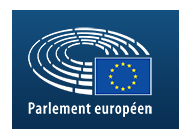Document type : French translation of chapter 4 of the book The suckling and weaned piglet published by Wageningen Academic Publishers
Authors: Original chapter (English): A. Prunier, N. Devillers, M.S. Herskin, D.A. Sandrcock, A.R.L Sinclair, C. Tallet, E. von Borell. French translation: G. Aubin-Houzelstein for FRCAW. Proofreading: T. Bridgeman, A. Prunier
Preview: During their first days of life, piglets reared for meat production are often subjected to numerous husbandry practices that cause injury of sensitive tissues and hence are potential sources of pain, the intensity and duration of which depend on the nature and magnitude of tissue damage. Each of these practices is carried out for specific reasons, such as preventing boar taint (castration), reducing the risk of tail biting (tail docking), limiting lesions on siblings and the sow's teats (tooth resection), improving health (injections) or identification animals (ear tagging or notching). For these different practices, this chapter, will discuss the rationale and methods used, the evidence of pain during and shortly after the procedure, the long-term pain consequences, the consequences for health and human-animal relationships, the current options for pain mitigation and the pros and cons of avoiding the practice completely. Solutions are emerging to minimise the industry's dependence on these practices, and, where still considered necessary, enable selection of the least painful option and mitigate any residual pain as much as possible. However, a better knowledge of the affective component of the pain involved in the practices as well as the establishment of standard and validated protocols of pain evaluation are needed in order to move forward and determine the best solutions from an animal welfare perspective and feasibility by farmers.






